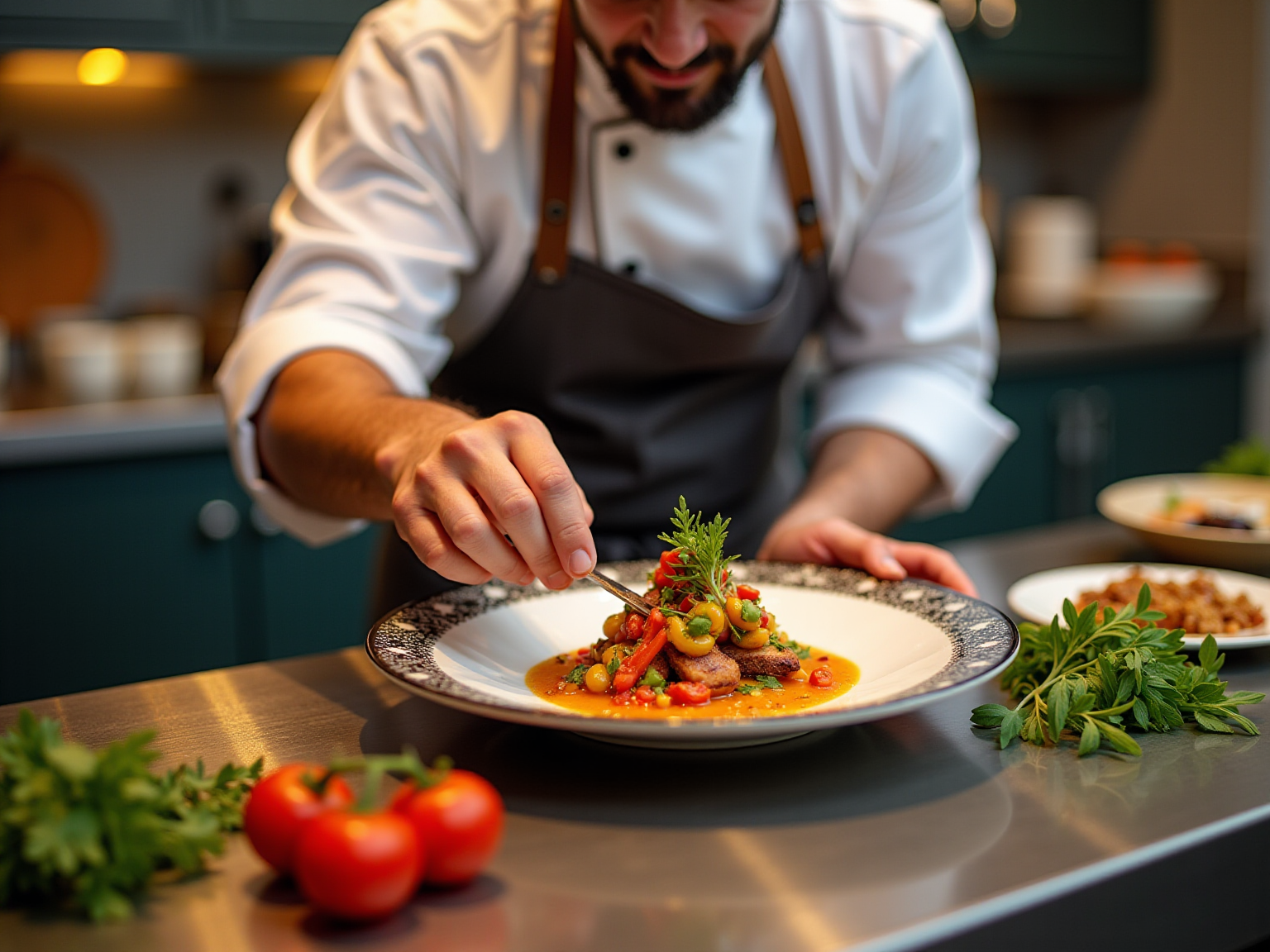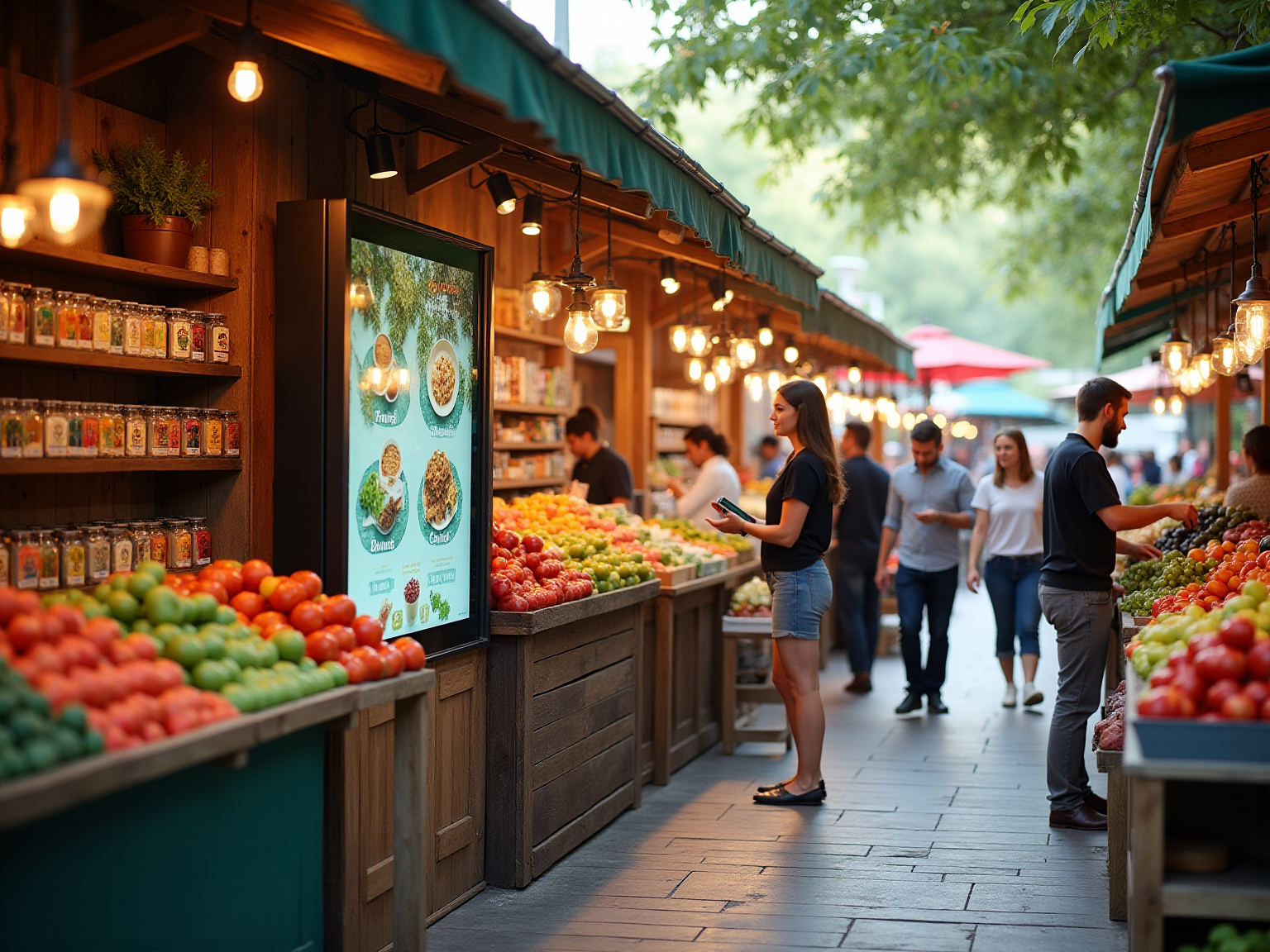Digital Branding Strategies
Best Practices for Food and Beverage Website Design in the UAE
Overview
Best practices for food and beverage website design in the UAE underscore the necessity of cultural sensitivity, mobile optimization, and user-centric design principles. These elements are essential for effectively engaging a diverse audience.
- Incorporating local customs is not merely beneficial; it is imperative.
- Accessibility through language options is critical, as is the utilization of analytics for continuous improvement.
Each of these factors plays a vital role in attracting and retaining customers within a competitive market, reinforcing the need for Brand Managers to prioritize these strategies.
Introduction
In the dynamic and multifaceted landscape of the UAE’s food and beverage industry, establishing a compelling online presence is paramount. With a rich blend of local traditions and international influences, businesses are tasked with navigating the distinct needs of a multicultural audience, encompassing both residents and tourists.
This article explores essential strategies that food and beverage websites can implement to effectively resonate with their target market, enhance user engagement, and boost conversion rates:
- Embrace cultural sensitivity
- Optimize for mobile
- Apply user-centric design principles
- Implement effective digital marketing strategies
The insights presented here will equip businesses to excel in a competitive digital arena. Moreover, the focus on analytics and continuous optimization empowers companies to adapt and evolve, securing their position in the rapidly changing food and beverage sector of the UAE.
Understand the Unique Needs of Food and Beverage Websites in the UAE
The UAE’s food and beverage sector presents a dynamic landscape, intricately shaped by a fusion of local traditions and global influences. To effectively engage a multicultural audience, encompassing both residents and tourists, websites must prioritize several key considerations:
- Cultural Sensitivity: Incorporating elements that resonate with local customs and preferences is essential. This includes offering halal options and featuring traditional dishes. Such an approach not only respects cultural values but also enhances brand loyalty among local consumers. Current statistics reveal that 75% of consumers in the UAE prefer brands that demonstrate cultural awareness in their marketing efforts.
- Language Options: Providing content in both Arabic and English is crucial to address the primary demographics of the region, ensuring accessibility and inclusivity for all.
- Mobile Optimization: With mobile usage rates soaring in the UAE, it is imperative that websites are designed to be mobile-friendly and responsive. By 2025, mobile devices are projected to represent around 85% of online traffic in the beverage industry, underscoring the necessity of optimization for user engagement and conversion.
- Visual Appeal: High-quality images and videos that effectively showcase culinary and beverage offerings play a vital role in consumer engagement. Visual content not only attracts visitors but also significantly influences their buying choices, making it a crucial element of online design.
As noted by the Dubai Future Foundation, “The catering service sector is a vital non-oil economic driver, with the government actively promoting entrepreneurship and innovation in culinary-related companies.” By addressing these distinct requirements, companies can leverage best practices for food and beverage website design in the UAE to create platforms that not only attract visitors but also transform them into devoted clients, ultimately driving success in the competitive culinary and beverage sector.
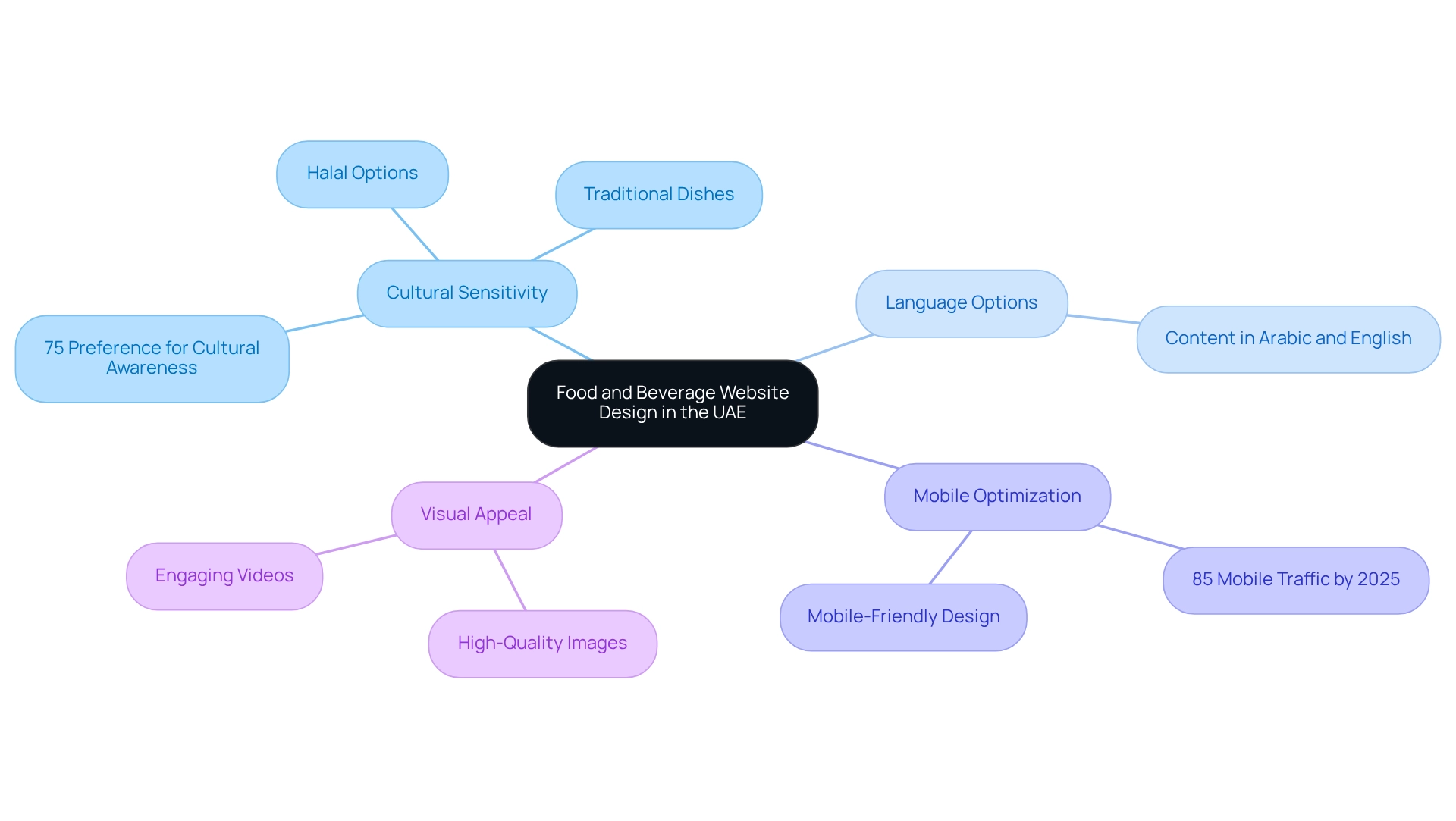
Implement User-Centric Design Principles for Enhanced Engagement
To enhance user engagement, food and beverage websites must adopt user-centric design principles that resonate with their audience:
- Intuitive Navigation: A well-structured navigation system is vital for enabling users to effortlessly locate information about menus, locations, and promotions. A rational arrangement not only enhances the visitor experience but also significantly reduces abandonment rates, which can detrimentally impact overall site performance. With a 0.72% increase in online platforms globally, totaling 7.8 million in February 2024, effective navigation is more essential than ever.
- Quick Load Times: Improving website efficiency is imperative, as research indicates that sluggish pages can lead to elevated bounce rates and diminished visitor retention. As noted, “slow pages can hurt your rankings in two ways: they lead to higher bounce rates and lower time spent on your site.” Ensuring rapid load times is crucial for sustaining engagement and preventing abandonment.
- Accessible Design: Incorporating accessibility features is essential to cater to all individuals, including those with disabilities. This includes providing alt text for images and ensuring keyboard navigation options are available, thereby making the site more inclusive.
- Interactive Elements: Engaging users through interactive features such as online ordering, reservation systems, and customer reviews can significantly enhance the user experience. These elements encourage visitors to actively participate and interact with the brand. For instance, by streamlining the checkout process and implementing abandoned cart email strategies, beverage brands can substantially reduce cart abandonment and recover lost sales.
By concentrating on these principles and implementing best practices for food and beverage website design in the UAE, businesses can cultivate a more engaging online presence that attracts visitors and motivates them to explore and interact with the brand, ultimately driving conversions and fostering customer loyalty. Given that 71% of enterprises worldwide possessed an online platform as of 2023, enhancing digital presence is crucial for beverage brands to capitalize on the remaining market opportunities.

Integrate Effective Digital Marketing Strategies into Website Design
To maximize the effectiveness of cuisine and beverage websites, businesses must integrate essential digital marketing strategies:
- Search Engine Optimization (SEO): Prioritize optimizing website content with relevant keywords to enhance search engine rankings, thereby attracting organic traffic. Current trends indicate that effective SEO practices are crucial for visibility in a competitive market. SEO Strategist Albert Badalyan emphasizes his passion for helping startups and large companies build a robust online presence, which is essential for thriving in the digital sector.
- Content Marketing: Develop engaging blog posts, recipes, and articles that not only provide value to users but also promote the brand’s offerings. Effective content marketing examples in the beverage sector illustrate that informative and entertaining material can significantly enhance customer engagement and brand loyalty. Statistics demonstrate that investing in content marketing can lead to a 9% increase in customer engagement, making it a vital strategy for brands.
- Social Media Integration: Incorporate social media buttons and feeds to encourage sharing and interaction. This strategy drives traffic from various platforms, leveraging the interconnectedness of digital channels to enhance brand visibility.
- Email Marketing: Implement sign-up forms for newsletters to capture leads and keep customers informed about promotions and new menu items. Investing in welcome emails has been shown to effectively increase sales and customer engagement, making it a vital component of a comprehensive digital marketing strategy. Key metrics for assessing email marketing success include open percentages, click-through percentages, unsubscribe percentages, and conversion percentages. Monitoring these metrics enables companies to optimize their email tactics and boost overall engagement, and by applying the best practices for food and beverage website design in the UAE, they can significantly improve their online visibility and connect with a wider audience, ultimately fostering growth in the competitive dining and beverage industry. Additionally, staying updated on current SEO trends for 2025 will further ensure that brands remain competitive in the UAE market.
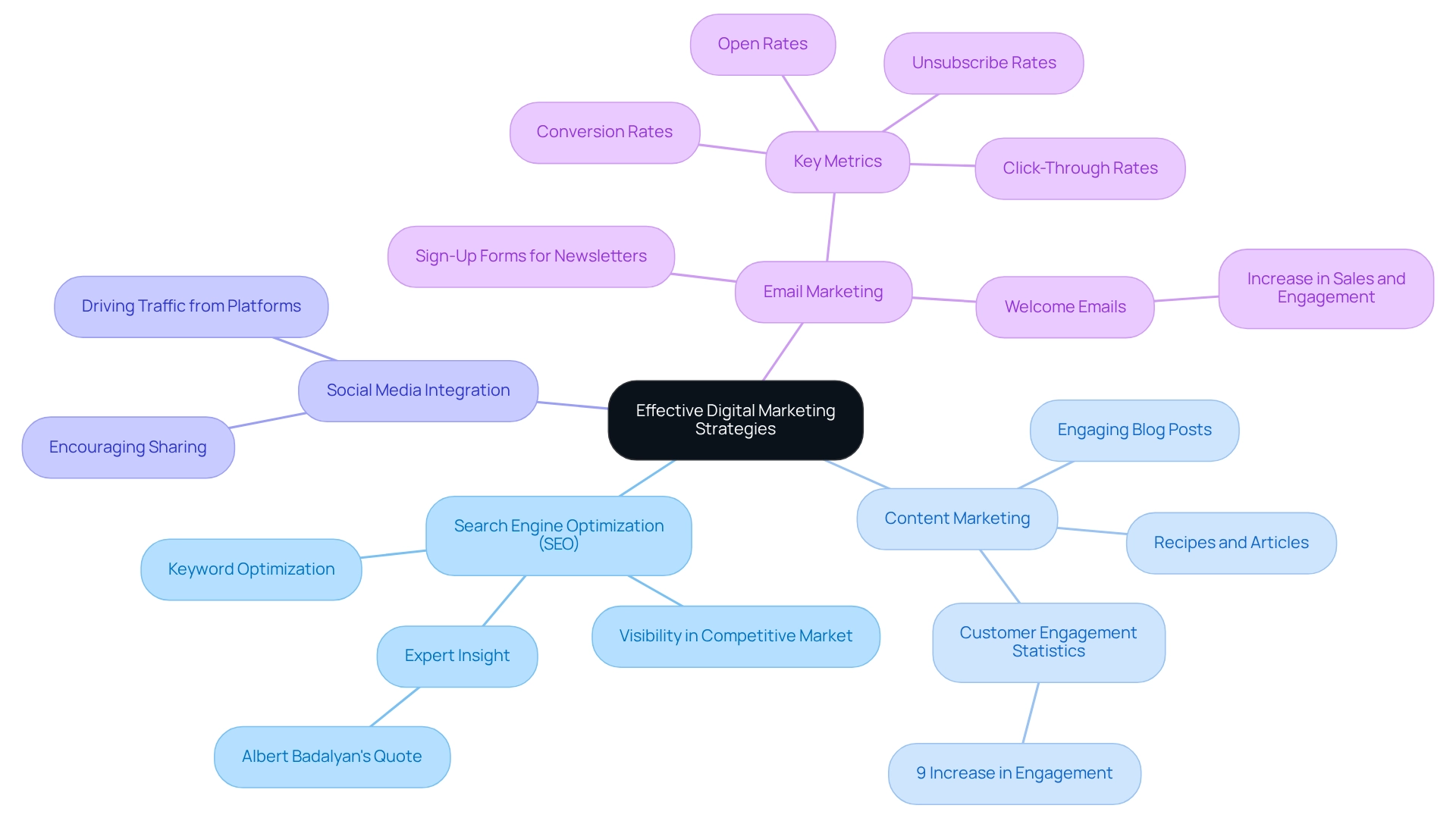
Utilize Analytics and Continuous Optimization for Sustained Success
To ensure sustained success, food and beverage websites must adopt the best practices for food and beverage website design in the UAE, emphasizing analytics and continuous optimization.
-
Implement Analytics Tools: Utilizing tools such as Google Analytics is essential for tracking user behavior, traffic sources, and conversion rates. This data provides valuable insights into effective strategies and areas needing improvement. Notably, statistics reveal that 62% of B2B trades operate with only six landing pages, which can severely limit conversion potential. This underscores the necessity of analytics tools to identify and optimize underperforming pages.
-
A/B Testing: Regularly conducting A/B tests on various elements—such as call-to-action buttons, layouts, and promotional banners—can significantly enhance performance. A/B testing has demonstrated success rates that can lead to increased engagement and higher conversion rates. For instance, companies that implement A/B testing strategies frequently observe a marked improvement in their online performance.
-
Customer Feedback: Actively encouraging customer feedback through surveys or comment sections provides insights into experiences and preferences. This direct input can guide modifications and enhance visitor satisfaction.
-
Regular Updates: Continuously refreshing content, images, and promotions is crucial for maintaining user interest. A dynamic website not only attracts repeat visitors but also adapts to evolving consumer behaviors and trends.
As Sir Timothy John Berners-Lee aptly stated, “Data is a precious thing and will last longer than the systems themselves.” By embracing a proactive approach to analytics and optimization, businesses can effectively navigate the competitive landscape of the food and beverage sector by utilizing the best practices for food and beverage website design in the UAE, ensuring long-term success and relevance in the market.
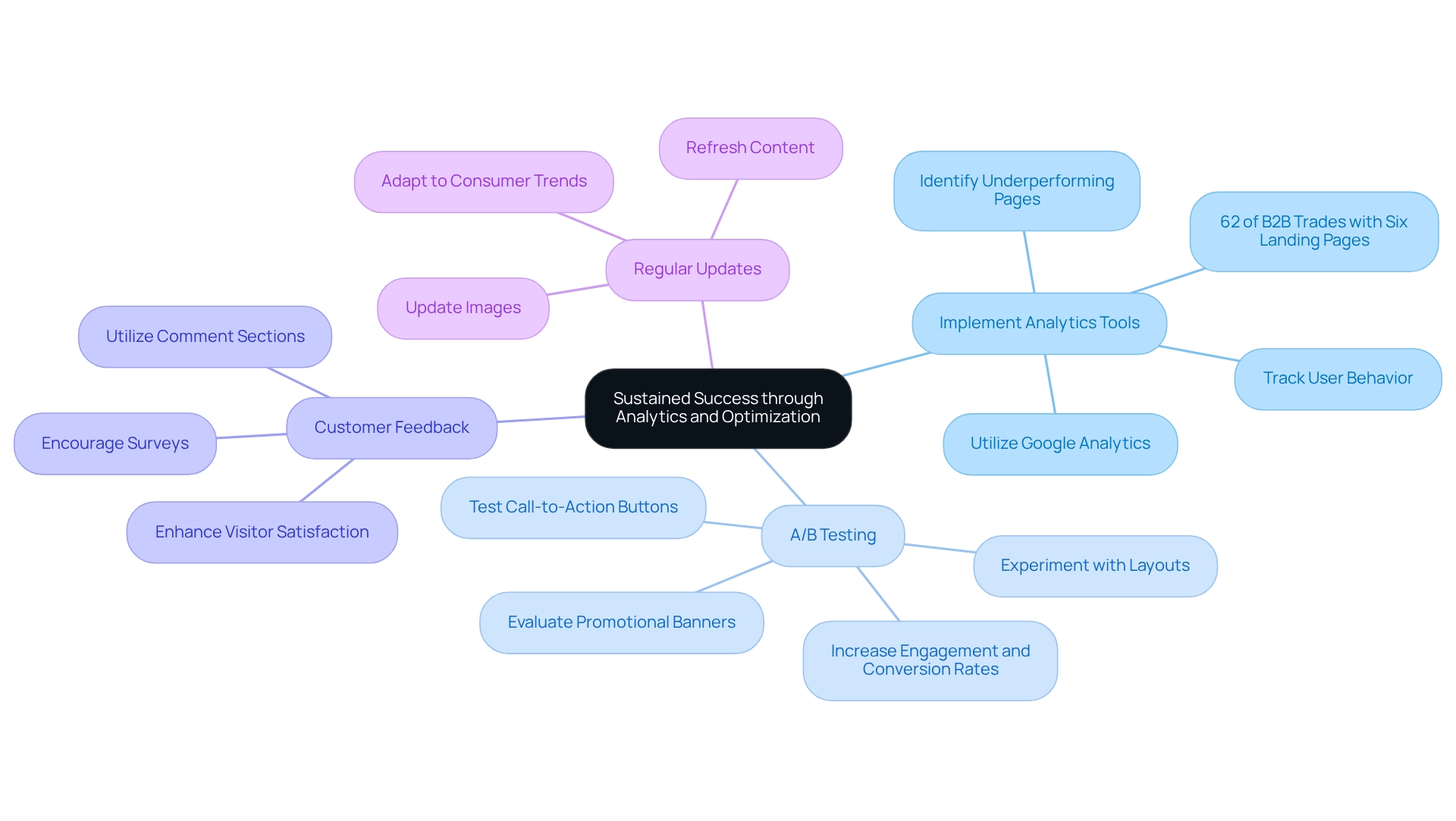
Conclusion
Creating a compelling online presence in the UAE’s food and beverage industry necessitates a multifaceted approach that addresses the unique needs of a diverse audience. By prioritizing cultural sensitivity, businesses can cultivate brand loyalty and resonate more deeply with local consumers. Furthermore, ensuring mobile optimization and visual appeal is crucial, as these factors significantly influence user engagement and purchasing decisions.
Adopting user-centric design principles enhances the user experience, facilitating easier navigation and interaction with the website. Fast load times, accessible design, and engaging interactive elements contribute to reduced bounce rates and foster customer loyalty. Integrating effective digital marketing strategies—such as SEO, content marketing, and social media—amplifies brand visibility and drives traffic, ultimately leading to increased conversions.
To sustain success in this competitive landscape, businesses must leverage analytics and continuous optimization. By utilizing analytics tools, conducting A/B testing, and actively seeking user feedback, companies can refine their strategies and adapt to changing market dynamics. Regular updates to content and design keep the website fresh and engaging, ensuring relevance to consumers.
In summary, a strategic focus on cultural relevance, user experience, and data-driven optimization empowers food and beverage businesses in the UAE to thrive in an ever-evolving digital environment. Embracing these strategies not only enhances engagement and conversion rates but also positions brands for long-term success in a vibrant and competitive market.
Frequently Asked Questions
What are the key considerations for websites in the UAE’s food and beverage sector?
Key considerations include cultural sensitivity, language options, mobile optimization, and visual appeal.
Why is cultural sensitivity important in the UAE’s food and beverage sector?
Cultural sensitivity is essential for engaging local consumers and enhancing brand loyalty. This includes offering halal options and featuring traditional dishes, as 75% of consumers in the UAE prefer brands that demonstrate cultural awareness.
What language options should websites provide for the UAE audience?
Websites should provide content in both Arabic and English to ensure accessibility and inclusivity for the region’s primary demographics.
How important is mobile optimization for websites in the UAE’s food and beverage industry?
Mobile optimization is crucial, as mobile devices are projected to represent around 85% of online traffic in the beverage industry by 2025. This highlights the need for websites to be mobile-friendly and responsive to enhance user engagement and conversion.
What role does visual appeal play in food and beverage websites?
High-quality images and videos are vital for consumer engagement, as they attract visitors and significantly influence their buying choices. Visual content is a crucial element of online design.
How does the UAE government support the catering service sector?
The UAE government actively promotes entrepreneurship and innovation in culinary-related companies, recognizing the catering service sector as a vital non-oil economic driver.

